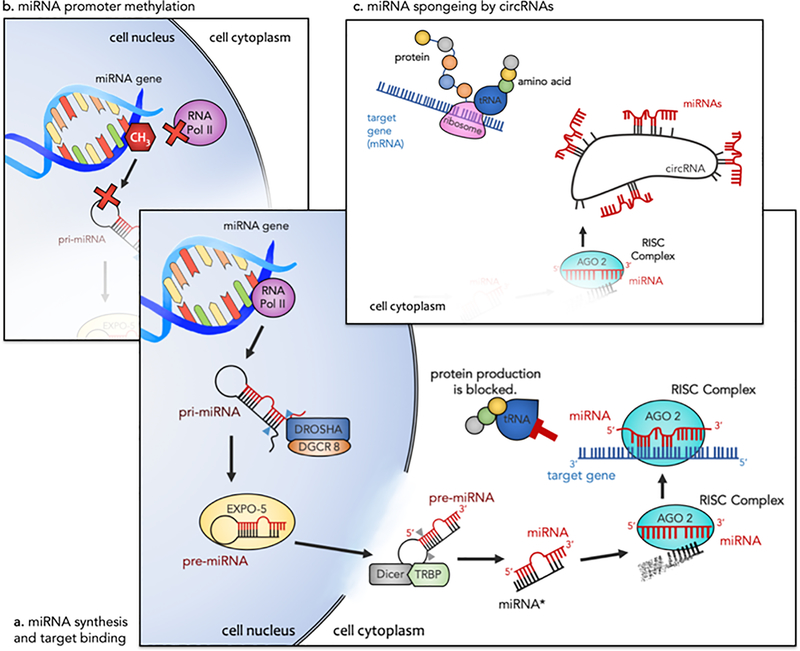Figure 1.
a) First RNA polymerase II transcribes the miRNA gene resulting in a pri-miRNA with a hairpin loop structure. This structure is cleaved by DROSHA and DGCR8 (blue arrows) into a pre-miRNA and transported out of the cell by EXPO-5. Dicer and TRBP cleave away the loop structure (gray arrows) leaving a miRNA-miRNA* duplex. AGO 2 loads the mature miRNA (red), forming the RISC complex, and the miRNA* strand (black) is degraded. RSIC can bind to specific gene targets and lead to translational repression. b) Methylation at the miRNA gene promoter region can reduce transcription of pri-miRNAs by RNA Pol II. This results in decreased production of mature miRNAs and altered downstream repression of their target genes. 3) In the presence of compatible circRNAs, there is competition for miRNA binding. Each circRNA can have multiple binding sites for a single miRNA effectively reducing miRNA-target gene interactions and their associated translational repression. As a result, both methylation and circRNAs can promote protein production. Abbreviations: microRNA (mRNA), RNA Polymerase II (RNA Pol II), pri-miRNA (primary miRNA), precursor miRNA (pre-miRNA), Exportin-5 (EXPO-5), Tar RNA Binding protein (TRBP), RNA-induced silencing complex (RISC), Argonaute (AGO 2), transfer RNA (tRNA), methyl group (CH3), messenger RNA (mRNA), circular RNA (circRNA).

